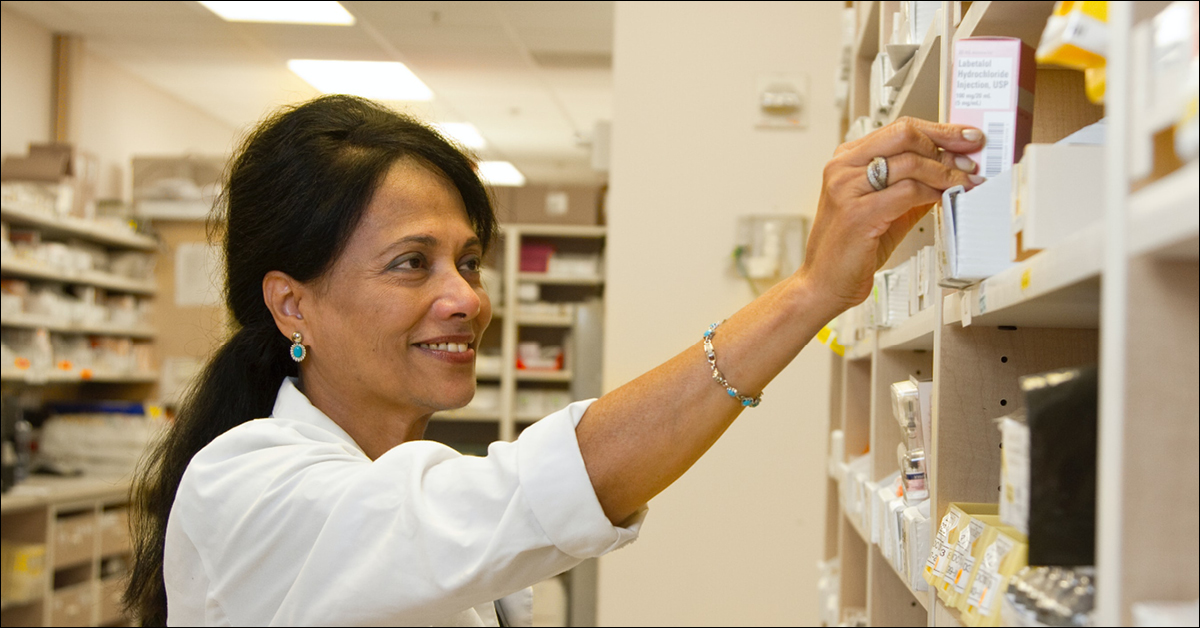How The Profession Is Organized In California
Regulation of Pharmacists in California
If you received your primary pharmacy degree from a school of pharmacy that is not
accredited by the Accreditation Council for Pharmacy Education (ACPE), you are considered a foreign pharmacy graduate. Status as a foreign pharmacy graduate is independent of citizenship and based solely on where you received your pharmacy education. If you are a foreign graduate, you must obtain certification by the Foreign Pharmacy Graduate Examination Committee (FPGEC) before you can apply with the California State Board of Pharmacy to obtain an intern license, take the pharmacist licensure examinations and become licensed as a pharmacist.
The California State Board of Pharmacy (the “CA Board”) regulates the profession of
Registered Pharmacist in California. It gives licenses and enforces state law regarding the practice of pharmacy. The CA Board also administers the California Practice Standards and Jurisprudence Examination for Pharmacists (CPJE), an examination on pharmacy law, and one of the three exams required to obtain a license.
The National Association of Boards of Pharmacy (NABP) is a national standards and regulation body and another major organization you will work with to earn your license. It administers the other two exams required to obtain a license:
- FPGEE – Foreign Pharmacy Graduate Equivalency Examination – standardized pharmacy test for international candidates
- NAPLEX – North American Pharmacist Licensure Exam – skills and knowledge of pharmacy
The National Association of Boards of Pharmacy is home to the Foreign Pharmacy
Graduate Equivalency Committee (FPGEC), which will be your first point of contact in your
licensing process. You must first earn FPGEC Certification through credential verification and exams before you can qualify for next steps.
The process you need to follow will be highlighted in the Eligibility for Licensing section
below.
Employment
According to the Bureau of Labor Statistics, a little under 60% of all pharmacists work in
what is considered a retail setting (independent or chain retail drugstores), and an estimated 31% of all pharmacy jobs are in the hospital, clinical and home health settings. Pharmacists in the United States also find work with pharmaceutical companies in research or sales roles; in insurance companies working with medical benefit packages; or with government agencies
working in health policy and services.
The US Department of Labor is projecting a 3% decrease in new jobs available to
pharmacists from 2019 to 2029. As of March 2021, the e national mean annual wage for
pharmacists is $125,460. As of May 2020, California had an annual mean wage of pharmacists at $146,070. Refer to the US Dept. of Labor website for the most current data.
Communication skills and knowledge of medical information systems are important
factors in career success for pharmacists. Their responsibilities in advising both doctors and
patients continue to grow with the development of new medicines, disease management methods, and opportunities to monitor patient treatment plans to prevent potential harmful drug interactions.
Increasing Professional Standards and Ineligible Pharmacy Programs
Reform in pharmacy education in the US now means that new pharmacy graduates will only qualify for licensing if they hold a 5-year professional degree – a PharmD or its equivalent. This change went into effect for all students graduating after January 1, 2003.
While 5 years is now the standard for US professional degrees in pharmacy, it is not the case worldwide. Unfortunately, foreign-educated pharmacy candidates who graduated from a 4-year program after the change date cannot qualify for the Foreign Pharmacy Graduate Equivalency Certification process with their current degree. Not even internships or extra coursework after graduation can count towards the 5-year minimum.
Currently, there are only two ways for you to become eligible if you are in this situation:
- You can use your foreign degree as a basis for transfer credit to a US or other 5-year pharmacy program and graduate from the new institution with a 5-year professional degree (some pharmacy schools even offer special advanced standing programs for foreign pharmacy graduates).
- If you completed pre-pharmacy coursework before entering your 4-year program, you may be able to gather this documentation and have it count towards the 5 year total.
Eligibility For Licensing
The process for getting a license as a pharmacist in California is as follows:
- Obtain Foreign Pharmacy Graduate Examination Committee (FPGEC) Certification from the NABP
a. Submit your FPGEC Candidate Application
b. Submit your Supporting Documents, including taking and passing the TOEFL iBT
c. Wait for NABP evaluation of application
d. Obtain acceptance of your FPGEC application and become eligible to take the FPGEE - Take the FPGEE
a. Register for the Exam
b. Prepare for the Exam
c. Practice the Exam
d. Take the Exam
e. Achieve a passing score of 75 or higher to obtain the FPGEC Certification - Complete 1500 hours of intern pharmacist practice in California
- Apply to be a registered pharmacist in California
a. Submit your CA Pharmacist Examination for Licensure Application (Form 17A-1) to the CA Board
b. Submit your Supporting Documents
• Your FPGEC Certificate issued by the NABP (from Step 1)
• Documentation of 1500 Intern Hours – Form 17A-29 (from Step 2)
• Examination Security Acknowledgment
• Self-Query report
• Live Scan
b. Wait for the CA Board evaluation of application
c. Obtain notice of eligibility to take the NAPLEX and the CPJE
d. Take the NAPLEX and CPJE.
• You may take the NAPLEX and CPJE in any order
I. CERTIFICATION PROCESS:
For specifics, refer to the most current FPGEC
Application Bulletin on the NABP website. 2021 FPGEC Application Bulletin
II. IMPORTANT NOTES ON THE FOREIGN PHARMACY GRADUATE EXAMINATION COMMITTEE (FPGEC) CERTIFICATION:
- Your FPGEC Certification file will close if you do not correspond with the
FPGEC office for two years unless you go through an extension process with the
FPGEC. - If you sit for the Foreign Pharmacy Graduate Equivalency Examination (FPGEE)
and fail, you will have to resend your application and pay the $600 fee again to
retake the exam. - Are you sure you have the equivalent of a 5-year PharmD degree? If you are a
pharmacy graduate from 2003 or later and think your pharmacy degree may not
be equivalent to a 5-year PharmD, you are participating in this process at your
own risk. Many candidates have spent a lot of time and money – even passed the
certification program exam! – before learning they are disqualified based on the
credential evaluation. They are judging how your education compares to US
requirements. Get advice sooner rather than later – from FPGEC or a PharmD
program – to understand if your degree is likely to qualify. - Now is the time to make sure your name is the same on all of the major
documents you will need for your licensing process. There can be real
complications in your paperwork and licensing times if you do not have exactly
the same name on your identification, applications, and foreign documents. - Please note: The FPGEC has seen a rise in fraudulent documents. These
fraudulent documents come from entities pretending to be official government
offices with the right to approve documents. These entities say that they can speed
the authentication of educational and licensure and/or registration documents for
use abroad. Candidates should tell friends and relatives gathering documents for
them to make sure that documents are from the issuing bodies only. If the FPGEC
receives fraudulent documents, the application will be delayed and your
acceptance to the FPGEC Certification Program may be jeopardized.
III. REGISTER AS A CALIFORNIA PHARMACY INTERN AND COMPLETE AN APPROVED PHARMACY INTERN TRAINING PROGRAM
To be licensed in California as a pharmacist, you must pass two exams: (1) the North
American Pharmacist Licensure Examination (NAPLEX) and (2) the California Practice
Standards and Jurisprudence Examination for Pharmacists (CPJE). To be eligible to sit for the NAPLEX and CPJE, you need to first file the Pharmacist Examination for Licensure
Application, and to file this Application, you need to first complete a 1,500-hour clinical training program. You will need to find your own internship in a hospital or retail pharmacy under the supervision of a pharmacist licensed in California. The application for the Intern Pharmacist License with specific information applicable to foreign-trained pharmacy graduates can be found on the CA Board website under the link to Intern Pharmacist License.
INTERNSHIP REQUIREMENTS
You must be registered as a Pharmacy Intern before you begin to count your hours – it is not enough to have a job in a pharmacy (as a pharmacy technician, for example).
Intern hours do not have to be obtained in one pharmacy location but must be earned in
the United States. Your internship must total 1,500 hours, with at least 900 of these earned in direct practice of pharmacy in two environments:
- Community pharmacy (ex: a commercial pharmacy like those found in stores),
and - Institutional pharmacy (ex: in a medical facility like a hospital or clinic)
You can also use up to 600 hours of your total 1,500 hours in activities that are not direct
practice but closely related to pharmacy practice (ex: some types of research). The CA Board must grant you permission before the hours are completed in order to count these hours toward your internship.
You must track your hours and your experience in the internship developing both
introductory and advanced skills, as defined by the Accreditation Council for Pharmacy Education. Be sure to understand the goals of your internship early so that you do not waste time doing the wrong activities.
DOCUMENTATION
The CA Board asks you to prepare two forms to document your internship experience.
These steps are necessary for licensing, and they are defined by the CA Board of, so you should start your internship knowing what these expectations are. Your internship hours must be reported using Forms 17A-29 the Pharmacy Intern Hours Affadavit and 17A-77 the Experience Affadavit. If your internship hours were completed outside of California, you must also include form 17A-16 the License Verification. A separate 17A-29 form is needed for each site where you completed internship hours.
IV. SUBMIT APPLICATION FOR LICENSURE AND EXAMINATION
Once you have your FPGEC Certification and your 1,500 hours internship hours are
complete, the next step is to prepare your Application for Pharmacist Licensure and
Examination. The application package is available on the California Board of Pharmacy website, which includes the most current instructions, forms and fingerprint request forms. This Application will not result in a license now. Instead, once approved by the CA Board, your application will allow you to take the NAPLEX and CPJE, which are two exams required for licensing.
The main items you will need to put together for your application to register as a
California pharmacy intern include:
- Non-refundable application fee: $285 (current as of 2021)
- Pharmacist Examination for Licensure Application (Form 17A-1 rev 1/2021)
- US Social Security Number
- 2” x 2” passport type photo, taken within 60 days of filing the application
- Military or Refugee Expedite, if applicable
- Documentation to show mandatory education
- Examination Security Acknowledgement (Form 17A-76), signed and dated within
60 days of filing the application - Verification of license in another state, if applicable
- Self-Query Report from the National Practitioner Data Bank, can be requested via
the NPDB website - Documentation of the required 1500 pharmacy intern hours (Form 17A-29). A
separate 17A-29 form is needed for each site where you completed internship
hours. If your internship hours were completed outside of California, you must
also include form 17A-16 the License Verification. - LiveScan request receipt – showing your fingerprint scan is done and fees are
paid (LiveScan forms are included in the online application packet). Your
fingerprints are used by both the Department of Justice and the Federal Bureau of
Investigation to do a criminal background check. To find a Live Scan location, go
to https://oag.ca.gov/fingerprints/locations. This is the faster and more efficient
choice if you are able to go to a site. Save your receipt for the application. If you
are not able to get fingerprinted via LiveScan in California, you will need to request the cards from the CA Board at https://www.dca.ca.gov/webapps/pharmacy/pubs_request.php - Foreign Pharmacy Graduate Examination Committee (FPGEC) Certification
Allow 30 days for the application processing. You will be notified in writing if your application is incomplete or notification of your eligibility. To facilitate electronic communication, you can provide an email address.
Tests
Once your Pharmacist Examination for Licensure Application is complete, the CA Board will send you a letter confirming your eligibility to take both the NAPLEX and CPJE. If your application is not complete, you will receive a “Deficiency Letter” about two months after you apply, which will tell you the missing part(s) of your application. Upon eligibility, you will register and take the NAPLEX and CPJE.
GENERAL TEST PROCEDURES & BASIC CHARACTERISTICS:
- Testing sites: the tests are administered by computer-based testing companies with many centers, dates and times available to take your tests. Since they give many different kinds of tests, however, their space can fill up – so it is best to set up an appointment soon after you get permission to schedule your test.
- Testing day procedures: you need to carefully read the instructions for what identification and materials are required and allowed on your testing day. There are security controls, sometimes including having your picture or fingerprints taken. You will also have limited breaks during the test. It is very important to arrive at least a half hour early for your test. If you arrive late or do not go to the center at all, you will have to pay to reschedule.
TEST-SPECIFIC DETAILS:
NORTH AMERICAN PHARMACIST LICENSURE EXAMINATION (NAPLEX)
The North American Pharmacist Licensure Examination (NAPLEX) tests the central knowledge you have gained in your education as a pharmacist.
To register for the NAPLEX, you will need to fill out an online application. You can
apply and pay NAPLEX the $475 test fee before you hear from the CA Board about your
Pharmacist Examination for Licensure Application. However, you will not receive an Authorization to Test (ATT) notice until the CA Board has told NAPLEX you are eligible. The ATT contains instructions on scheduling your exam, and it is valid for only one testing session. NABP strongly recommends scheduling your exam(s) as soon as you have received your ATT letter by email. If your eligibility period expires prior to scheduling an examination appointment, you will forfeit all fees and must begin the application process again, including paying the application and examination fees. A thorough breakdown of the application steps, including answers to common questions can be found in the Candidate Application Bulletin on the NABP website.
The NAPLEX is a 6-hour exam composed of 225 questions.
NAPLEX tests six content areas:
- Obtain, Interpret, or Assess Data, Medical, or Patient Information: approximately
18% of questions - Identify Drug Characteristics: approx. 14%
- Develop or Manage Treatment Plans: approx. 35%
- Perform Calculations: approx. 14%
- Compound, Dispense, or Administer Drugs, or Manage Delivery Systems: approx. 11%
- Develop or Manage Practice or Medication-Use Systems to Ensure Safety and Quality: approx. 7%
The National Association of Boards of Pharmacy encourages candidates to take the NAPLEX online practice test, called the pre-NAPLEX, exam. It contains questions that were used on older tests, and the computer program works under conditions similar to the real NAPLEX. The pre-NAPLEX can be taken up to two times.
CALIFORNIA PHARMACY JURISPRUDENCE EXAM (CPJE)
The California Pharmacy Jurisprudence Exam tests your knowledge of both Federal laws and the laws of the state of California.
The CPJE is scheduled and administered by Psychological Services, Inc. (PSI). They will
contact you about two weeks after the CA Board informs you that you are eligible for testing.
PSI will ask you to pay the test fee, which needs to be paid to PSI, not to the CA Board. You will then be able to set a date and time to take the test at one of their testing centers.
The CPJE consists of 90 multiple-choice test questions and lasts 2 hours.
The CPJE tests 3 content areas:
- Patient Medications (20 items)
- Patient Outcomes (33 items)
- Pharmacy Operations (22 items)
The CPJE Candidate Bulletin, which can be found on the CA Board website, contains a
detailed content outline and sample questions.
Time And Costs
Successfully licensing as a Registered Pharmacist in California depends on a number of factors, including
- The completeness of your educational and professional records and a qualifying degree program
- Your performance on several tests
- Your ability to find an internship placement
- Your free time and expendable income
We provide two hypothetical scenarios to show some of the variety of results that immigrant professionals may find when they seek to become pharmacists in California. Please consider these scenarios as two examples out of many possibilities. Your experience will vary. Please keep in mind that living expenses and the cost of test-preparation courses are not included in the scenarios below.
Other Careers And Credentials
CONSIDER REGISTERING AS A PHARMACY TECHNICIAN:
Working as a pharmacy technician can be one way to work, gain experience and earn a living in your field while you complete the steps required for licensing. You do not have to be Pharmacy Technician to complete your internship as a Pharmacy Intern. A Pharmacy
Technician is an entry-level staff position in a hospital or retail pharmacy. It usually earns an hourly wage and requires only limited pharmacy education.
Becoming a Pharmacy Technician can have some advantages:
- You will have a first US credential that makes you more employable and able to earn some income to support your licensing process
- You will not have to wait for your FPGEC certification to begin working in a pharmacy environment
- You will be able to gain US work experience and adapt to a US pharmacy environment with fewer professional responsibilities
- Once you become a Pharmacy Technician you may be a more attractive candidate because of your US job experience and the range of responsibilities you are allowed as both an Intern and a Technician
- You may improve your chances of receiving a salary as you complete your 1,500 internship hours
The CA Board website has a section on applying for a Pharmacy Technician License, which includes showing proof of pharmacy education, plus an application packet.
Beyond Licensing
MAINTAINING LICENSURE
Pharmacists must meet continuing education requirements of 30 hours every 2 years. The education must be given by a provider approved by the Accreditation Council for Pharmacy Education or the Pharmacy Foundation of California. You should keep records of your continuing education for four years, since licensees are sometimes audited.
You must also renew your license every 2 years. The California Board of Pharmacy sends a notice reminding you to renew your license, so be certain to keep your contact information up-to-date with their office. If you let your license expire, you will have a much more complicated process to restore the license.
JOINING A PROFESSIONAL ASSOCIATION
State and national associations for pharmacists provide opportunities for professional
development and networking. They also help set acceptable working conditions for the
profession and give information and opinions on policy in California and across the US. Their websites may offer useful orientation to pharmacy candidates about the licensing and examination process, including test preparation. They often provide Continuing Education to members as well.
PROFESSIONAL ASSOCIATIONS
- American Society of Health-System Pharmacists
- American Pharmacists Association
- California Society of Health-System Pharmacists
- California Pharmacists Association, CPhA
- US Food and Drug Administration
- National Association of Chain Drug Stores
- Academy of Managed Care Pharmacy
LICENSING MOBILITY (RECIPROCITY)
The state of California does not have any reciprocal agreement to honor the pharmacy licenses of other states. It grants licenses to candidates either by examination (the process described in this topic) or endorsement (where a pharmacist already licensed in another state must independently meet all California requirements for licensing).
Tips
GET YOUR DEGREE EVALUATED
Make sure your foreign degree is likely to be accepted by the FPGEC before you start its certification program. Your degree will not be evaluated immediately, so you may use valuable time and resources preparing for and even passing the program’s exam, only to learn later that your degree disqualifies you
CHECK TRANSFER CREDITS
If you graduate after 2003 from a four-year pharmacy program you will have to return to school in the US and complete requirements for a PharmD degree. Your foreign degree could count for a significant amount of transfer credits or for placement in a special advanced standing program. State your case with more than one pharmacy school and share your credential evaluation: it is possible that one school may grant more credits than another
SPEAK UP
Be your own advocate throughout the licensing process. Seek clarification about questions and concerns directly from official sources. If you feel your degree has been misinterpreted or you do not understand a fine point of the state regulations, organize your questions, contact the California Board of Pharmacy for help.




